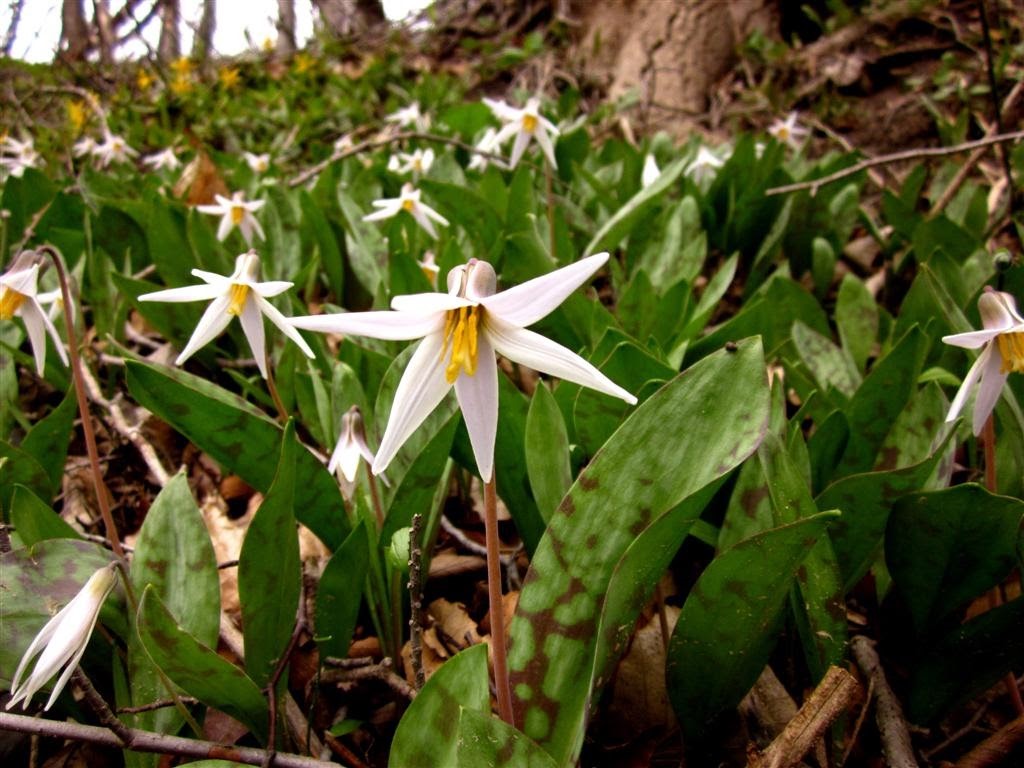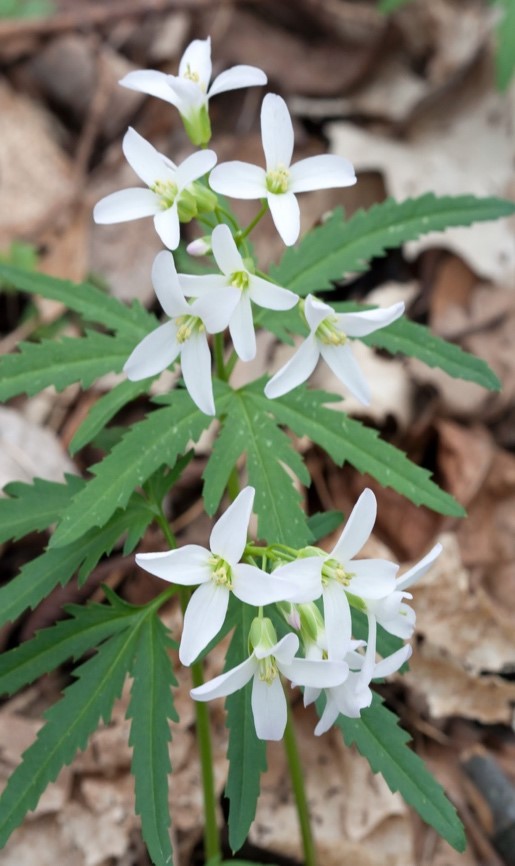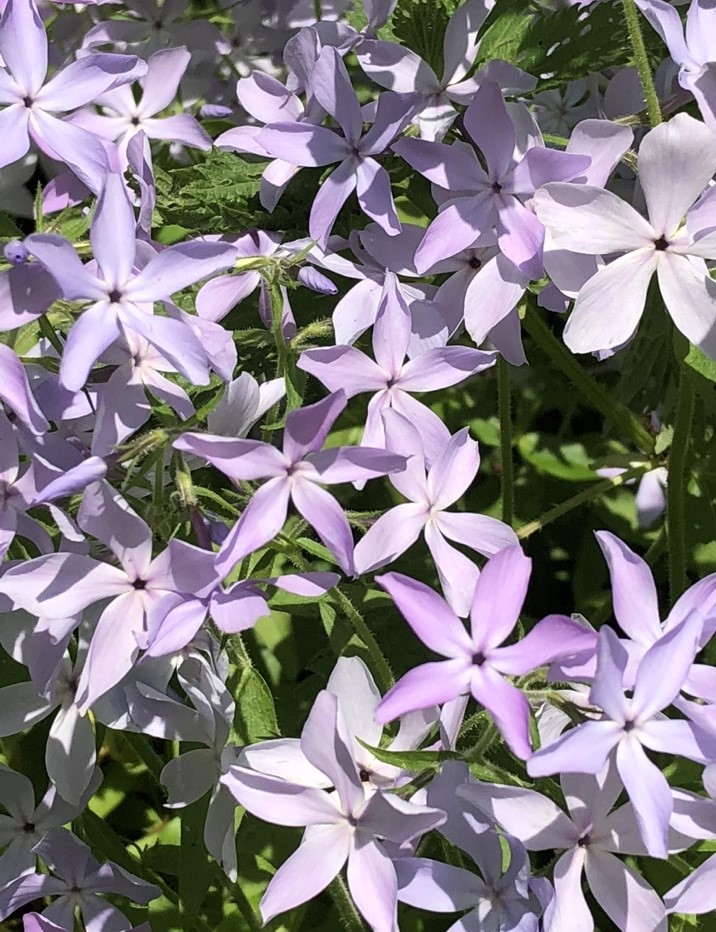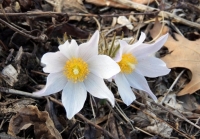These unconventional plants grow, reproduce, and die back extraordinarily quickly, all before the prime growing season and ideal conditions offered by the summer. They give invaluable early-season nectar to local pollinators as well as a friendly reminder to us that winter has come to an end.

Photo: Trout Lilies, photo by Matt Flower
You can observe numerous ephemeral wildflowers beginning around March in the parks and grassy patches all around the Milwaukee area. What might you find when you look? Pasqueflowers are some of the earliest of early bloomers. Sometimes known as the wind flower, meadow anemone, and Easter flower, These woody-stalked, silver-haired wildflowers stand roughly six inches tall. They produce single, up-right, and bell-shaped flowers that range from white to deep purple with bright yellow stamens. Once a pasqueflower is fertilized, spherical seed heads with silky plume-like styles are produced, where they will stay for weeks until ripe when the wind will disperse them.

Photo: Cut Leaf Toothwort
Another wildflower that decorates the newly snow-free ground is the Trout Lilly. Other names include small white fawnlily, dog's-tooth violet, serpent's tongue, deer tongue, and yellow snowdrop. These 4-6 inch plants are recognizable by their unique leaves. They are a mix of molted green and brown, just like the markings of a brook trout, which is where they get their name. They are found in large groups near the bases of trees in moist soil. On its flower, six white petals fold backward that will elongate with age and six yellow stamen protrude from the base.
The eccentrically named Cut Leaf Toothwort, also called Five-parted Toothwort or Pepper Root, sprouts multiple white to light pink flowers from a single stem. The knobby stem has hairless leaves segmented into five deeply cleft sections that make sharp “teeth” in the margins. They stand between three and twelve inches tall. The four flower petals form a cross arrangement with six stamens at the center that each have a yellow anther at the end. You’ll find these ephemerals under trees with decaying leaves from last fall in moist soil.
If you miss some of the earliest bloomers that are only here for weeks at a time, late spring ephemerals like Woodland Phlox flowers come in a variety of pastel colors including blue-lavender, light purple, pink, or white. They are also called Wild Blue Phlox, Blue Phlox, Forest Phlox, or Wild Sweet William. The word “phlox” comes from the Greek word meaning “flame,” named so because the five petals of its flower resemble flames. You can see these wildflowers from late spring into early summer. All of the petals connect to a tubular base where nectar is stored near the bottom and pollen is stored near the opening. This means that only long-tongued pollinators can reach the nectar while short-tongued pollinators may only reach the pollen. Because of this, butterflies are the Woodland Phlox’s main pollinators.

Photo: Woodland Phlox, photo by Kim Forbeck
Take advantage of these once-a-year conditions to spot some of Milwaukee’s short-lived ephemeral wildflowers!
Sources:
http://www.authenticwisconsin.com/ephemerals.html
https://www.schlitzaudubon.org/2019/05/10/spring-ephemerals/
https://news.wisc.edu/spring-ephemerals/
https://thecalloo.com/blog/spring-ephemerals
https://hort.extension.wisc.edu/articles/pasque-flower-pulsatilla-vulgaris/
https://www.highcountrygardens.com/perennial-plants/pulsatilla/growing-pulsatilla-pasque-flowers
https://en.wikipedia.org/wiki/Phlox_divaricata
https://en.wikipedia.org/wiki/Erythronium_albidum
This article was written by Communications Intern, Ellie Rickman.





